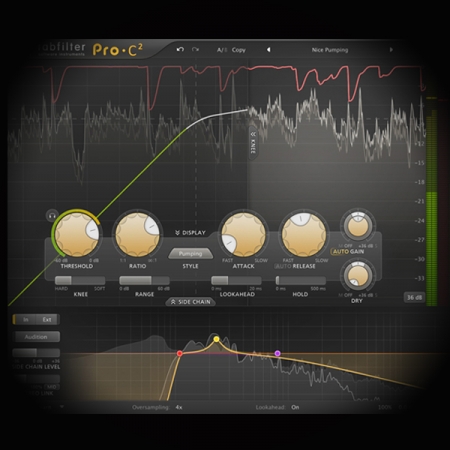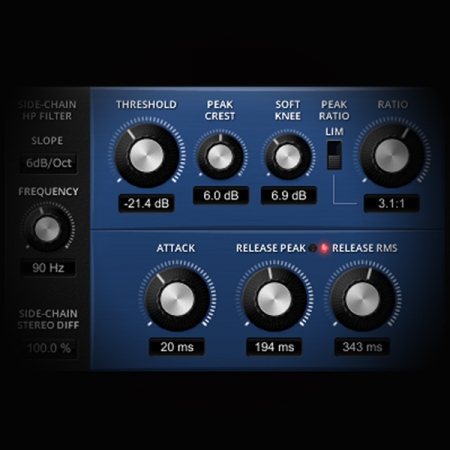Description
Compressing Rap Vocals video tutorial explains in detail how to use a compressor to colour and shape rap vocals.
Compressing rap vocals requires a basic understanding of how different types of compressors process audio. The behaviour of a compressor is defined by a number of factors but it is safe to say that the gain reduction cell is what drives the compressor and different gain reduction technologies result in different behavioural characteristics.
Let us take a quick look at the most common types of compressor topologies and how they behave:
Compressor Topologies (types)
VCA – Uses a Voltage Controlled Amplifier. VCAs are fast and have low distortion which makes them come across as ‘clean’. However, VCAs can sound aggressive if pushed. Because VCAs don’t add colour to a sound they can be used for transparent compression as they sound clean and smooth. The most common VCAs used are the SSL G Bus and the DBX 160.
FET – Uses Field Effect Transistors. FET compressors emulate the tube/valve sound using transistor circuits. They are fast and bright sounding and are popular with rock genres for exactly these reasons. FET compressors add both punch and colour to a sound and can be extremely useful on percussive sounds or sounds that need a snappy transients. The most famous FET compressor is the Urei 1176.
Opto (optical) – Uses a photocell as a detector and a light bulb to determine the gain reduction. Different light sensor types and illumination sources affect the gain reduction in different ways. The time lag between the photocell and detector makes for a slow attack and release and this makes this type of compressor perfect for processing vocals, performing gentle automatic gain changes and mastering. The most famous Opto compressors are the LA-2A and Avalon AD2044.
Vari-Mu – Uses a valve (tube) as the variable gain reduction. They are slow to react which makes them perfect for ‘gluing’ purposes and the ratio increases with gain reduction which gives this topology such a distinct sound. This type of compressor works best on the master/group bus as it glues sounds together into a single homogeneous sound. It can be used to add warmth and thickness to a sound. The most famous Vari-Mu compressor is the Fairchild 670.
Finally, we need to look at feed-forward and feed-back compression as they are relevant in how a compressor behaves.
Feed-forward and feed-back compression
Compressors tend to come in two behavioural types: feed-forward and feed-back. In a feed-forward compressor, the control circuit receives the audio signal before the signal goes through the amplification system. Most modern-day compressors behave this way. Offering detailed control over the attack and release functions feed-forward compressors are better suited to control audio than add acres of colour.
In a feed-back compressor, the control circuit receives the audio signal after it has passed through the amplifier stage. Most vintage compressors behave this way. Because the detector reacts to the signal after it is compressed the result is a smoother and more coloured response.
Now that we have a handle on how the different compressor topologies behave we need to make a decision as to which type to use for compressing rap vocals. You would think that a fast acting compressor like the FET compressor would be best suited to catch all the dynamic attack transients of the rap vocals and because rap vocals are invariably fast in delivery this type of compressor would be perfect. BUT, it doesn’t always work that way. A slow acting compressor like the Opto compressor can work wonders in smoothing the attack transients and allowing for control while being transparent. So, it comes down to what you want to achieve with the compressor.
To be thorough and to show you how any compressor topology can be used successfully to compress rap vocals I have made sure to use all the main compressor type in this tutorial.
In the Compressing Rap Vocals video, I use a male rap vocal and run it through a number of different compressor topologies. I explain how each topology behaves and what settings to use for achieving different compression results. I show you how the parameters of a compressor work and how to use them to compress time-based rap vocals. I use a number of different compressor plugins and explain how each one works.
Plugins used in this video:
Topics covered in this video are:
- Understanding the requirements for Rap Vocal Compression
- Compression features and use
- Side-chaining: internal and external
- Side-chain filtering practices
- Signal Path structuring
- Using various compressor topologies
- The power of Opto
- Fairchild 670 gluing exercises
- Valve Compression for Vocals
- Vari-MU features and practices
- Understanding the signal path structure
- Tips and Tricks
If this tutorial was of help maybe these will also be of benefit:
The 4 Modes of Compression and Expansion
Extending the Dynamic Range of Rap Vocals
Downward and Upward Compression for Rap Vocals
The 4 stages of Vocal Eq processing
De-esser – what is it and how does it work
Layering Vocals using Parallel Compression











